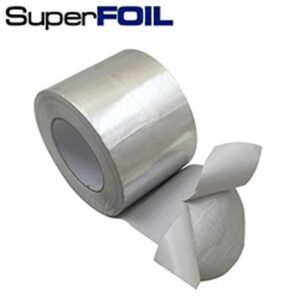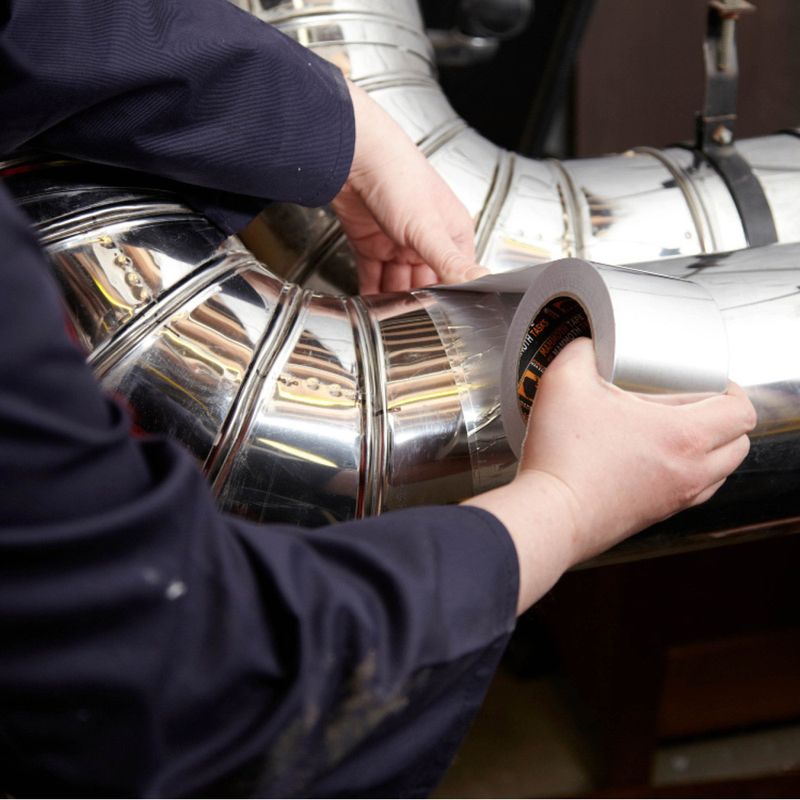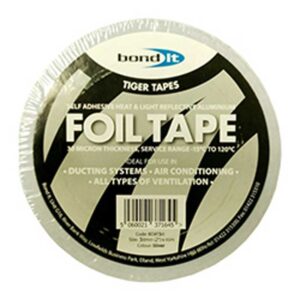The type of project on which you are working and the materials you choose to use will determine how and when to use foil tape.
Now:
Foil tape comes with several benefits. These include being self-adhesive, easy to install, and heat and light-reflective.
As you would expect, there are many foil tapes to choose from, which include top brands recognised for insulation such as SuperFOIL and Novia.
But when should you use foil tape insulation?
Let’s find out!
When to use foil tape
You should use foil tapes when you are hoping to achieve airtightness and moisture resistance. They can be used across many applications thanks to their versatility and durability. These include insulation, ventilation and air conditioning projects.
 Insulation
Insulation
The key benefit of using foil tape with insulation is that it reduces or prevents any air leakage. It is suitable for use with foil-faced PIR boards, multifoils and vapour control layers. However, some insulation products require specific foil tapes to guarantee this. For example, SuperFOIL multifoil insulation recommends using SuperFOIL SUPERIOR foil tape to ensure that the insulation performs to the best of its ability. Foil tape can be used in both roof and wall applications.
If you are overlapping vapour control layers or damp proof membranes, foil tapes are a solution for sealing any edges. NOVIA VCL foil tapes are high tack and easy to install in walls and ceilings of insulated building structures.
Ventilation and air conditioning systems
Leaks in a ducting system can lead to wasted energy and increased bills. Seal any joints or gaps using foil tape, which adheres to ducts. This will help to reflect any heat or light whilst providing excellent moisture resistance.
It is important that you clean and dry surfaces before applying the foil tape. This helps minimise the risk of dirt or dust compromising the application. Simply cut the length of foil tape required and smooth it over the seam.
Electrical wiring
Foil tape can be used for shielding and grounding purposes in electrical wiring applications. It helps protect cables and wires from electromagnetic interference (EMI) and radio frequency interference (RFI), improving signal integrity and reducing noise.

Repairing metal surfaces
Foil tape is suitable for repairing metal surfaces, such as aluminium, copper or stainless steel. It provides a strong, weather-resistant bond, making it ideal for patching holes, cracks, or tears in metal components or structures.
Sealing vapour barriers
Foil tape is commonly used in construction projects to seal seams and joints in vapour barriers, such as those used in wall or roof assemblies. It helps prevent moisture vapour from penetrating the building envelope, thereby reducing the risk of condensation and mould growth.
Reflective insulation
Foil tape is often applied to reflective insulation materials, such as radiant barrier foil or bubble wrap insulation, to secure the seams and edges. It enhances the insulation’s reflective properties, helping to reduce radiant heat transfer.
Bottom line
Foil tape insulation is a versatile adhesive product with numerous applications in HVAC, insulation, electrical, construction and repair projects.
Its ability to provide strong adhesion, weather resistance and thermal conductivity makes it a valuable tool for sealing, repairing, and insulating various surfaces and components.












